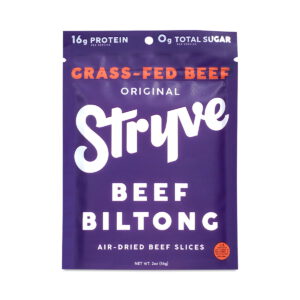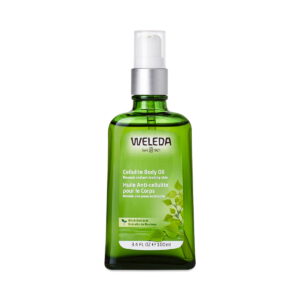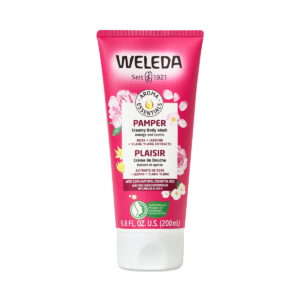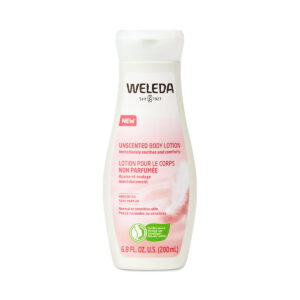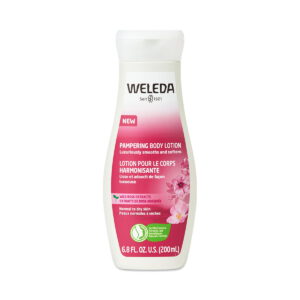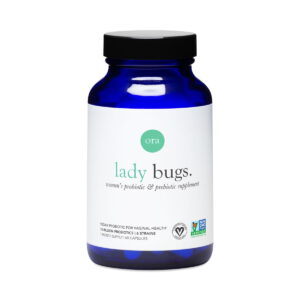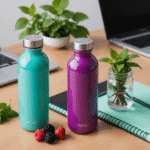- Make-ahead meal ideas
- Storage tips for freshness
- Easy recipes for batch cooking
- Freezer-friendly options
- Quick reheating methods
- Healthy make-ahead snacks
When embarking on an adventure to create your perfect make-ahead meals, it’s essential to approach your grocery shopping with intention and strategy. Smart shopping can save you both time and money, ensuring you stock up on all the necessary ingredients for those busy weeks ahead.
Start by planning your meals for the week. This allows you to create a comprehensive grocery list that prevents impulse buys and minimizes food waste. Focus on versatile ingredients that can be used across multiple recipes. For example, quinoa can serve as a base for both salads and bowls, while roasted vegetables can complement various proteins.
- Healthy Foods: Incorporate plenty of fresh fruits and vegetables into your cart. Look for seasonal produce, which is often less expensive and more flavorful.
- Local Foods: Shop at farmers’ markets or local grocers to find ingredients that are often fresher and support the community. This not only enhances the quality of your meals but also fosters sustainability.
- Vegan Foods: If you’re considering plant-based options, be sure to stock up on legumes, nuts, and seeds. Items like chickpeas and lentils can serve as powerful protein sources and are incredibly economical.
- Budget Friendly Foods: Keep an eye out for store-brand products and bulk items, which can significantly reduce costs. Ingredients such as rice, oats, and frozen vegetables are excellent budget-friendly staples.
- Fitness Foods: If health is a top priority, consider lean proteins like chicken breast or plant-based sources such as tempeh or tofu. Omega-3-rich foods like salmon or chia seeds can also support your fitness goals.
- Organic Foods: Prioritize purchasing organic options for the “Dirty Dozen,” a list of produce that may carry higher pesticide residues. Apples, strawberries, and spinach are commonly found on this list and are worth the investment.
When shopping online, be vigilant about ingredient safety. Always check for expiration dates and look for reviews on products to ensure quality. Buy pre-packaged food only from reputable brands and retailers. If you’re uncertain about a product’s safety, doing a quick search for recalls can be a wise choice.
Finally, when shopping in-store, apply the first in, first out method—placing newer items behind older ones in your pantry or fridge ensures that nothing goes bad before you have a chance to use it. By equipping yourself with this savvy shopping knowledge, you’re already well on your way to mastering healthy cooking and having an array of delightful make-ahead meals ready to go!
Storage tips for freshness
To maximize the quality and longevity of your make-ahead meals, proper storage is vital. One of the first steps is choosing the right containers. Glass containers are often preferred due to their durability and safety in microwaves and ovens, while plastic containers should be BPA-free if you choose that route. Look for airtight options that prevent moisture and air exposure, which can spoil food faster.
When it comes to refrigeration, always ensure that the temperature is set correctly—ideally at or below 40°F (4°C). This inhibits the growth of harmful bacteria. It’s also beneficial to let cooked meals cool down slightly at room temperature before placing them in the fridge or freezer. This way, you avoid raising the overall temperature of your refrigerator, which could lead to spoilage of other items.
Labeling your meals with the date they were made is another crucial tip. Using a waterproof marker or label maker, indicate not only the date but also the contents of each container. This helps streamline meal planning during your busy weeks and ensures you consume older meals first, minimizing food waste.
Freezing is an excellent method for prolonging the lifespan of your make-ahead meals. However, it’s essential to portion your meals appropriately prior to freezing. Smaller portions defrost quicker and help maintain the quality upon reheating. Additionally, consider wrapping portions in plastic wrap or using freezer bags, which can take up less space and reduce the risk of freezer burn.
Here’s a helpful comparison table to illustrate the effectiveness of various storage methods:
| Storage Method | Pros | Cons</th |
|---|---|---|
| Refrigeration | Quick access, ideal for short-term storage | Limited lifespan (generally 3-5 days) |
| Freezing | Extends potential lifespan (up to 3 months), preserves nutrients | Longer defrosting time, potential texture changes |
| Vacuum Sealing | Removes air, preserves freshness and flavor, prevents freezer burn | Requires specialized equipment, can be costly |
| Glass Containers | Reusable, durable, safe for microwaving | Heavier than plastic, can break |
| Plastic Containers | Lightweight, convenient, inexpensive | Potential chemical leaching, may warp in heat |
In addition to the storage methods themselves, take care to avoid overcrowding your refrigerator or freezer. Overstuffing can restrict air circulation, leading to inconsistent temperatures that may promote spoilage. When it comes to reheating, consider using appropriate methods that retain the quality of your meals. Microwaves are quick but can create uneven heating, while ovens or stovetops may require more time yet deliver better texture and freshness.
By implementing these simple yet effective storage tips, you can enjoy the benefits of healthy cooking with minimal effort during your busy weeks. Your make-ahead meals will remain as delightful and nourishing as the day they were prepared, ready to support your health and wellness journey.
Easy recipes for batch cooking

When it comes to tackling the task of batch cooking, having a collection of easy recipes at your fingertips can simplify your life significantly. By preparing meals in advance, you set yourself up for successful, stress-free busy weeks ahead. Here are several recipes that are not only delicious but also adaptable and easy to store.
- Quinoa and Black Bean Bowls: Cook a batch of quinoa, mix it with canned black beans (rinsed and drained), diced bell peppers, corn, and a squeeze of lime juice. This dish is packed with protein and fiber, and it stores well in the refrigerator for up to five days.
- Overnight Oats: Combine rolled oats, your favorite plant-based milk, and toppings such as chia seeds, berries, or nut butter in a mason jar. Shake it up and leave it in the fridge overnight for a quick, healthy breakfast that you can enjoy on busy mornings.
- Vegetable Stir-Fry: Chop up a mix of seasonal vegetables like broccoli, bell peppers, and carrots. Sauté them with tofu or your protein of choice in a stir-fry sauce. This meal can easily be refrigerated and reheated, making it ideal for weekday lunches or dinners.
- Chili: A pot of chili can be made with ground turkey (or lentils for a vegan option), kidney beans, tomato sauce, and spices. Chili gets better as it sits, so feel free to make a large batch and freeze portions for later use.
- Roasted Vegetable Medley: Roast a variety of vegetables, such as sweet potatoes, zucchini, and Brussels sprouts, tossed with olive oil and your favorite herbs. These can be added to salads or served as sides throughout the week.
When preparing these meals, consider implementing the following cooking techniques that enhance both flavor and nutrition:
- Batch Sautéing: When making stir-fries, opt for a large skillet and cook using batch sautéing. This method allows you to cook more food at once, saving time without sacrificing texture.
- One-Pot Meals: Look for recipes that require only one pot or pan, significantly reducing cleanup time. Dishes like sheet pan dinners, where protein and vegetables roast together, are perfect for quick cooking and minimal mess.
- Freezer Packs: Pre-assemble meals in freezer bags, allowing you to store them easily. For instance, you can pre-chop vegetables and combine them with grains and sauces, so all you need to do is cook when you’re ready.
- Use Herbs and Spices: Before cooking, consider pre-mixing spice blends. This not only saves time but also amplifies the flavor of your meals. For example, a taco seasoning blend can transform beans into a flavorful filling for burritos or tacos.
As you navigate the kitchen for batch cooking, remember that portioning is key. Invest in good-quality containers—preferably glass or BPA-free plastic—that fit easily in your fridge and freezer. Label each container with the meal name and the date to keep track of freshness. This organized method ensures you enjoy tasty, health-boosting meals at your convenience while adhering to your busy schedule.
Freezer-friendly options
When it comes to enjoying make-ahead meals, freezing can be a game changer, allowing you to prepare meals in advance and keep them on hand for busy weeks. Opting for freezer-friendly options not only saves time but also helps reduce food waste, making it a practical choice for those who manage a tight schedule.
Begin with soups and stews, as they freeze beautifully while retaining their flavors and textures. Consider whipping up a big batch of vegetable soup or hearty chili—both can be portioned into individual containers and frozen for up to three months. When it’s time to eat, simply reheat on the stove or in the microwave for a quick, nourishing meal.
Another excellent choice for the freezer is casseroles. These one-dish wonders can be assembled ahead of time and frozen before baking. Favorites like lasagna or chicken and rice casserole can be prepared in larger quantities, allowing for multiple meals in one go. Just be sure to cover them tightly with foil or use freezer-safe lids to prevent freezer burn.
Meal-prepped grains such as brown rice, quinoa, or farro also do well in the freezer. Cook a large batch, portion it into bags, and store them for quick side dishes or as bases for salads and bowls. This versatile option not only saves cooking time later but also encourages healthy cooking by making it easier to include whole grains in your meals.
Don’t forget about breakfast options, too! Smoothie packs are a fun and convenient method to ensure you have a healthy start to your day. Pre-portion your favorite fruits, greens, and even some nut butter into freezer bags. In the morning, just toss everything into a blender with your choice of milk or yogurt for a quick, nutritious breakfast.
For snacks, consider making energy balls or protein bars that can be individually wrapped and frozen. These provide a fantastic quick grab-and-go option for those frantic days. Mix oats, nut butter, and your favorite add-ins like chocolate chips or dried fruits, roll them into balls, and freeze for a handy energy boost whenever needed.
“Freezing is the best way to prolong food life and save on meal prep, all while promoting healthy eating habits.”
Lastly, when preparing meals for the freezer, consider using vacuum sealing if you have the equipment, as this method can further enhance the longevity and freshness of your make-ahead meals. Just be sure to properly label and date each item to keep track of what’s available.
Embracing these freezer-friendly options means you can enjoy nutritious meals even on the busiest weeks, making healthy cooking a simple and stress-free affair.
Quick reheating methods
 Ready-to-eat meals save precious time during busy weeks, but reheating them effectively is key to maintaining their quality. Various reheating methods cater to different types of meals and personal preferences. When you reheat meals, consider the method that best brings out flavors while keeping textures appealing.
Ready-to-eat meals save precious time during busy weeks, but reheating them effectively is key to maintaining their quality. Various reheating methods cater to different types of meals and personal preferences. When you reheat meals, consider the method that best brings out flavors while keeping textures appealing.
The microwave is the most common reheating appliance, favored for its speed. However, to achieve uniform heating, it’s essential to arrange food evenly on the plate or in a bowl. Cover the food with a microwave-safe lid or damp paper towel to maintain moisture and prevent drying out. Stirring or flipping the food halfway through the heating process promotes even warmth throughout. If your meal contains multiple components, staggering the reheating times can ensure that everything reaches the proper temperature at the same time.
Ovens and stovetops are excellent for reheating larger dishes or meals that benefit from a bit of crisping, such as casseroles or roasted vegetables. Preheating the oven to a low temperature around 350°F (175°C) and covering the dish lightly with foil helps retain moisture while preventing burning. For stovetop reheating, adding a splash of stock or water can help revive dried-out grains or proteins. A non-stick or cast-iron skillet works beautifully for keeping that crisp texture on items like roasted vegetables or enchiladas.
Another innovative method involves using the air fryer, which can reheat food quickly while restoring crunchiness that may have been lost during the initial cooking process. This method is particularly useful for items like pizza or breaded foods, offering that fresh-from-the-oven delight in just a few minutes.
Preparation goes a long way in making these reheating methods easier. When storing your make-ahead meals, divide them into single portions to facilitate faster reheating, ensuring you’re not stuck with a larger dish that takes longer to warm up. Having meals portioned out allows for quick grabs during the week, making it simple to stay on track with your healthy cooking goals.
Being mindful of these reheating techniques can transform your make-ahead meals into a satisfying dining experience, even on your busiest days.
- Can I freeze all types of meals?
- While many meals freeze well, it’s best to avoid freezing those with a high water content, such as salads or raw vegetables, as they may become mushy upon thawing. Foods like soups, stews, casseroles, and pre-cooked grains are excellent freezer candidates.
- How do I know if my frozen meal is still good?
- Frozen meals can generally last for up to three months in the freezer without significant loss of quality. If you notice freezer burn, discoloration, or off smells upon thawing, it’s safest to discard the meal.
- What’s the best way to reheat rice?
- To reheat rice, add a small splash of water and cover it with a lid while warming it in a microwave or stovetop to help retain moisture. This prevents the rice from drying out and keeps it fluffy.
- Can I reheat meals multiple times?
- It’s recommended to reheat meals only once for safety and quality reasons. Each reheating cycle adds to the potential for bacterial growth, so it’s best to heat only what you’ll eat in one sitting.
- Do I need to thaw frozen meals before reheating?
- While some meals can be reheated directly from frozen, it’s advisable to thaw them overnight in the refrigerator for best results. This allows for even heating and better texture, especially for complex dishes.
- What containers are best for freezing meals?
- Glass containers or BPA-free plastic containers designed for freezing are preferred. They should be airtight to prevent freezer burn and allow you to safely reheat meals without spillage.
- How can I keep my meals from getting soggy when reheating?
- To avoid soggy meals, use methods that promote air circulation during reheating, such as baking or air frying. Covering foods loosely with foil or a microwave-safe lid can help trap steam without making them soggy.
Healthy make-ahead snacks
- Snack Preparation: Choose versatile ingredients that can be transformed into multiple snacks. For example, you can prepare a big batch of chickpeas—roasting some for crunchy snacks while saving the rest for hummus.
- Nutritious Options: Keep an eye out for protein-packed foods. Greek yogurt, cottage cheese, and nut butters make great bases for quick snacks. Pair these with fruits or whole-grain crackers for the perfect combination of protein and carbs.
- A Healthy Indulgence: If you crave something sweet, opt for energy balls made from oats, dates, and nuts. They’re easy to make in bulk and can be stored in the fridge or freezer for a quick energy boost.
- Portable Snacks: Think about snacks that travel well, such as homemade granola bars or roasted nuts. These are perfect for busy weeks when you need something to grab on the go. You can customize the flavors by trying different nuts, seeds, and dried fruits according to your taste.
When shopping for ingredients, prioritize whole foods. This includes buying in bulk when possible. For instance, bulk bins often offer nuts, seeds, and grains at a lower price than packaged varieties, making it budget-friendly while maintaining quality. Be cautious to store these items in airtight containers to keep them fresh and free from pests.
For convenience and variety, consider adding a selection of frozen fruits and vegetables to your cart. Frozen produce is just as nutritious as fresh and can be blended into smoothies or added to meals for a nutritional boost without worrying about spoilage. Look for options without added sugars or sauces to keep your snacks healthy.
If you’re shopping online, be sure to check the shipping policies of your favorite health food stores. Many offer discounts on bulk purchases, which can help you save money while stocking up on nutritious snacks. Look for subscription services that provide regular deliveries of pantry staples and snacks, ensuring you never run out of healthy options.
Finally, be aware of ingredient safety, both online and offline. Familiarize yourself with brands that prioritize organic ingredients and transparency in their sourcing. Always read the labels for additives or preservatives that might not align with your dietary preferences. If you’re unsure about a brand, do a quick search for customer reviews and product recalls to ensure you’re buying quality items.
With these smart shopping tips and healthy snack ideas, you can simplify your meal prep process and make the most of your busy weeks, all while enjoying the benefits of healthy cooking.
New Customers Offer!
Free Gift for the new customer
$24 Value, When You Subscrib Visit Thrive Market

